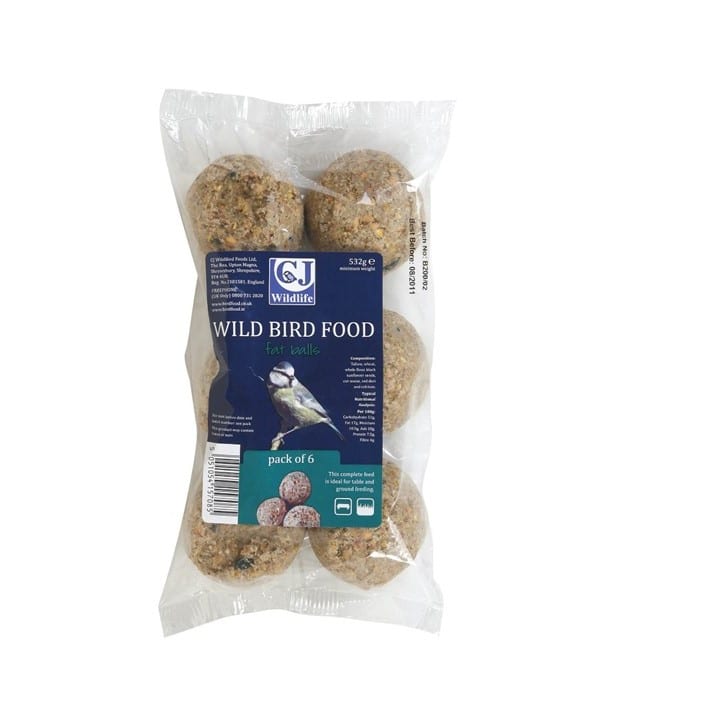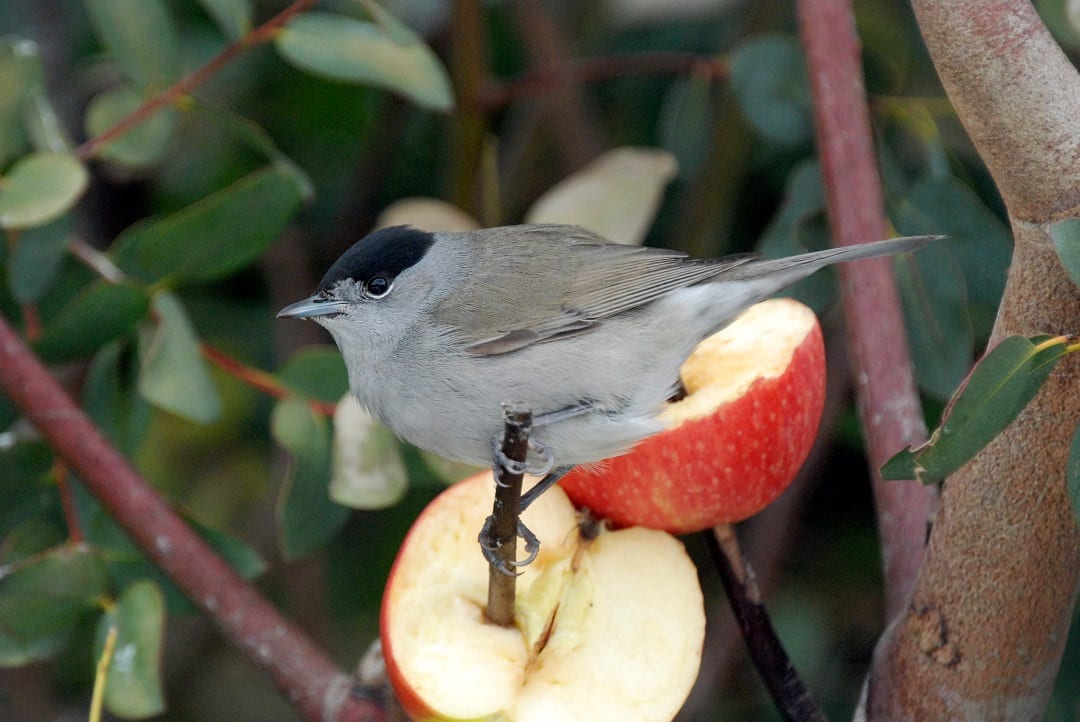What food is best for feeding and attracting garden birds?
There is no single answer to this – each different food type has advantages and disadvantages and will attract a different mix of species to your garden. The golden rule is that a diversity of food types will give you a diversity of bird species.
The two bird foods we tend to recommend first are peanuts and sunflower hearts – they’re both eaten by a variety of species, have high protein and calorie contents, and are readily available in most shops.
]
What time of year should I put out food for birds?
The time of year that the birds really need you to put out food in your garden is during the winter months (roughly November-March). During these months, the natural food sources of fruit, berries, nuts and seeds have been depleted and there are few invertebrates active and available. Furthermore, the weather is cold meaning small birds have to use more energy to stay warm, and the days are shorter meaning there’s less time to find food to recoup lost energy.
That being said, it’s perfectly fine to feed them all year round if you want. During the summer months, adults have to feed themselves and their chicks. If there’s food in your garden, they will feed themselves on that, and that gives them more time and energy to find protein-rich foods for their chicks. It’s best to avoid fat/suet-based products during the spring and summer months, but do put out mealworms, peanuts and sunflower seeds.
Where should I place the feeders in my garden?
In general, you should put your feeders within a metre or two of a tree or hedge. Our common garden bird species are reluctant to come into open spaces as they’re vulnerable to predation from Sparrowhawks and various mammal predators, so they like to know there’s some shelter (i.e. vegetation) nearby that they can escape into if a predator appears.
This is why the hedgerows in the Irish countryside are so important for many of our birds – it gives them a network of shelter where they feel safe, and also provides them with the berries, seeds and invertebrates they need to feed on. If you want to make your garden more suitable for birds and wildlife, see our ‘Gardening for Wildlife’ section here.
Obviously, you want to get the benefit of seeing activity at your feeders too, so try and find that sweet spot where they’re placed close to vegetation but also in view from your window too!
There are very few birds in my garden – where have they gone?
At certain times of the year, birds will be less reliant on your garden. Things get very quiet in gardens for a few weeks in the autumn – the weather isn’t too cold yet and there’s a huge abundance of food in the wider countryside – berries, seeds, nuts, fruit and invertebrates. So, in September, October and November the birds are spoiled for choice! Try not to panic if your garden is very quiet until late November. Similarly, in the late spring and summer, birds disperse around the countryside to claim a territory and find a mate, so there will be fewer birds in the general vicinity of your garden at that time of year too – though you’ll have some local regulars who should continue to appear!
See also the question above about where to place the feeders in your garden. If you’re not getting many birds in the winter, it might be down to where your feeders are located.
What can I do if a species is ‘bullying’ another species at my feeders?
Some species are certainly more dominant at feeders than others – especially the larger species like Magpies, Rooks and Jackdaws, Starlings, and even the bigger of the ‘small’ birds such as Greenfinches and House Sparrows. Generally, the other smaller species don’t avoid feeders as a result, but they do change their behaviour – they’ll grab some food quickly and go rather than hang around, or they’ll visit your garden earlier and later in the day to get food and avoid the larger species in the process.
If you want to ameliorate things, the best thing to do is to provide more feeders in a variety of locations, allowing the smaller birds to visit the less-busy feeder(s) throughout the day. It’s better to have two half-full feeders in different parts of the garden, than one large and full feeder in one location as the latter will mean all birds have to visit the same location and will end up arguing with each other!
If your problem is with members of the crow family, some people use squirrel-proof feeders to prevent them accessing food, or tie two hanging baskets around the feeder creating a similar ‘dome’ that larger birds can’t get into.
How do I ensure good ‘feeder hygiene’ in my garden?
Because birds congregate in high numbers at bird feeders, there’s potential for the transmission of some bacteria, parasites and other infections. To avoid this, be sure to clean all feeders and water dishes every 1-2 weeks with a veterinary disinfectant or mild bleach (5%) solution. Give the feeders a good scrub, a thorough rinse and allow them to air dry completely before using them again. It’s also worthwhile to switch the location of your feeders from time to time, so that there isn’t a build of droppings in any one location, and to spread your feeders around the garden so birds aren’t all coming together at one location.
Though most of the bacteria and parasites that might affect birds have little impact on humans, it’s important to wash your hands properly after touching and cleaning your feeders – just to be sure!
How do I deter rats from my garden?
Rats are present in almost all habitats in Ireland. This generally isn’t a problem until they come close to houses and people. Sometimes rats are attracted to gardens where birds are being fed, so the key to stopping this is to remove what’s attracting them! What’s attracting them is the food, but more specifically the food on the ground. If you can stop your food spillage problem, you’ll stop your rat problem.
Solutions include switching to foods that don’t spill as much (e.g. peanuts), using bird tables where food is out of reach from the ground, or using hanging bird feeders that catch any food that might otherwise be spilled. You can get creative with this by attaching a plastic plate to the base of your feeder to catch any falling seed.
If your feeders are over hard ground its worthwhile cleaning up any spillage on a daily basis too.
What should I put out for my garden birds during cold weather, snow and frost?
This is when the birds really need you! A diversity of foods will allow you to help a diversity of species. High calorie foods like fatballs, suet blocks, peanuts and sunflower seeds are all great. Put the food in multiple locations – in different feeders, but also some on the ground (or roof or on top of a wall to keep away from cats/rats) for species that don’t like hanging from feeders.
One of the most important things during cold weather is to put out fresh water. The icy conditions mean natural water sources might be frozen over, so your birds will need somewhere to drink and wash themselves. Keep an eye throughout the day to make sure the water you put out hasn’t frozen over and top it up with fresh water each day.









